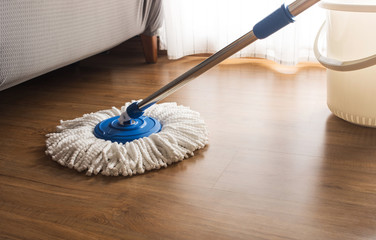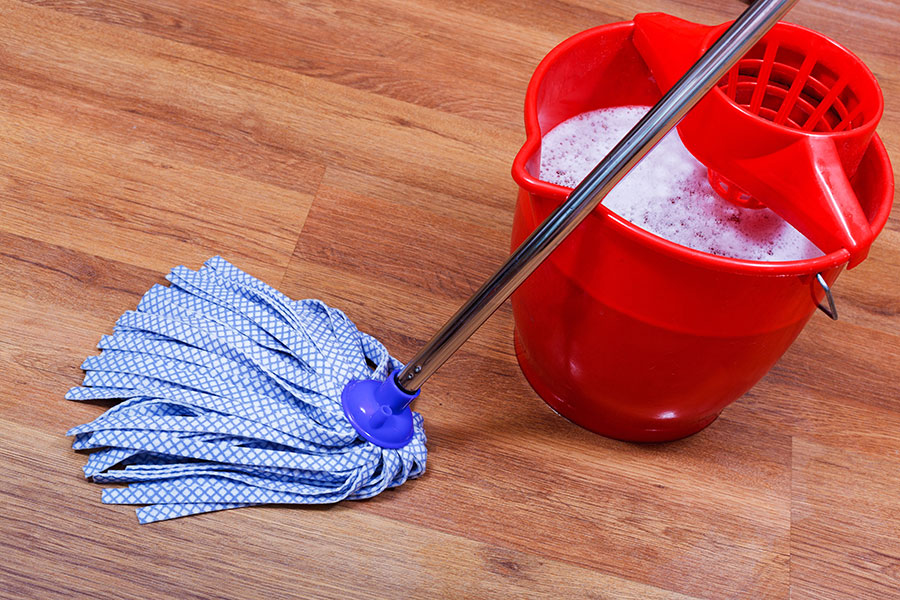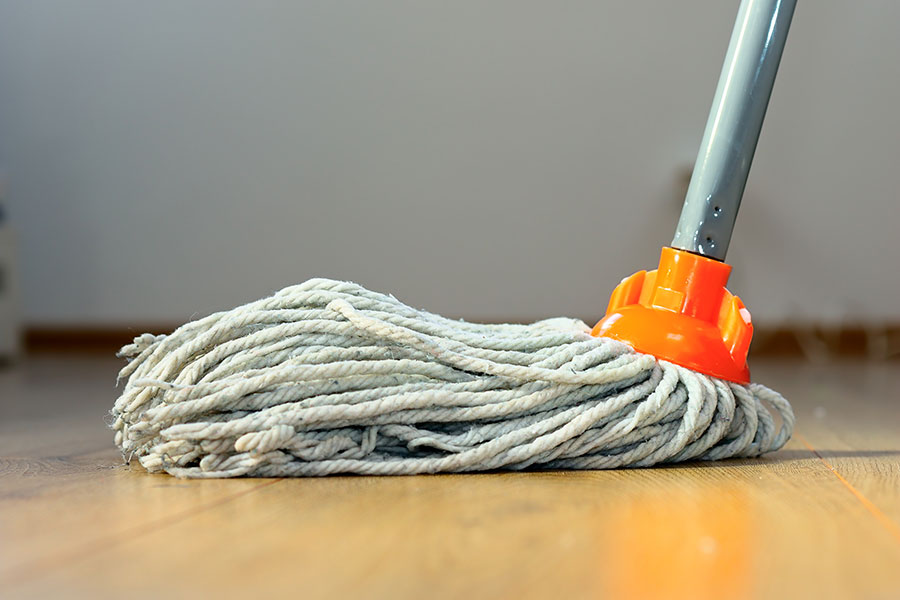
How to Mop Floors With Vinegar (Without Leaving Odor)
Cleaners Talk is reader-supported. This post contains affiliate links, we may earn a commission at no additional costs to you. As an Amazon Associate we earn from qualifying purchases.
Vinegar is an affordable, non-toxic, multi-purpose product that is beneficial for cooking and cleaning. This simple item is a popular eco-friendly choice for many individuals who have sensitivities to harsh chemicals or want to clean delicate surfaces. It is available at any grocery store and is easily found in bulk.
Using a vinegar solution to mop your floors can leave a clean surface free from dirt and debris while also acting as a natural disinfectant. However, vinegar is not a safe product for all floor types. Knowing how to mop with vinegar and when it is suitable will keep your home clean and ready for anything.
Types of Vinegar
There are numerous types of vinegar, but that does not mean they are all great for mopping floors. Generally, distilled white vinegar, apple cider vinegar, and balsamic vinegar are the most common products in homes today. However, it is best to stick to distilled white vinegar when using it for cleaning purposes.
Some individuals like using apple cider vinegar due to its scent. However, because of its color, it has staining capabilities, making it less desirable. If you use apple cider vinegar or are all out of distilled white vinegar, ensure you use a high dilution rate to avoid any staining during cleaning.
Avoiding the Vinegar Odor
You are not alone if you are reluctant to use vinegar for mopping floors because of the strong odor it carries. Thankfully, this problem is easy to remedy, so you can have clean floors and still use a vinegar solution.
The great thing about using vinegar for floors is that it may smell while using it, but the smell disperses as soon as it dries. However, you have a few choices if you prefer to clean without any vinegar scent.
- Add 1-part baking soda to 2-parts vinegar
- Include natural essential oils in a vinegar solution
- Use lemon juice with a vinegar solution
Using any one of these three selections will help give you a vinegar solution that does not have a scent while you use it. Consequently, all these methods to avoid a smell will work for various flooring materials. This versatility makes cleaning floors easy and odor-free with products you already have at home.
How to Mop With Vinegar Odor-Free

When mopping floors with vinegar, the first step is to create the correct cleaning solution (no matter the type of flooring). You do not want to use it undiluted since it will not provide the results you want or need to clean your floors. The ideal solution will depend on the surface you want to mop.
Let’s take a closer look at the various ways to use vinegar for mopping.
1. Mopping Linoleum Flooring With Vinegar
Because of its durability, many individuals have linoleum flooring in shared household areas, like the kitchen, bathroom, and entranceways. Consequently, these high-traffic areas require frequent cleaning, so using a less harsh vinegar solution can keep your floors looking great without wearing them out or damaging the surface.
An effective linoleum cleaning solution will require one cup of undistilled white vinegar to one gallon of warm or hot water. Although linoleum is durable, it does not fare well with standing water, so ensuring you wring out the mop thoroughly is vital to keep your floor in good shape from frequent mopping.
Linoleum flooring can withstand a vinegar solution that includes baking soda, essential oils, or lemon juice to help mask the smell. Its durability makes it easy to clean with any vinegar solution you create.
2. Mopping Tile Floors With Vinegar
To create the perfect cleaning solution for tile floors, you will use one-half cup of distilled white vinegar to one full gallon of warm water. Vinegar can be abrasive on tile surfaces since it is an acidic product.
Consequently, if the solution is too strong, you could damage your tile. When cleaning, you must wring out the mop thoroughly so the floor dries quickly and you do not leave excess water as you mop.
Tile floors are durable enough to clean with a vinegar solution that includes any odor-reducing elements, such as baking soda, essential oils, or lemon juice. This flooring material is easy to clean, much like linoleum.
3. Mopping Wood Flooring With Vinegar
Although vinegar is non-toxic, it does have an acidic nature, making it less ideal for wood. Before you start mopping away with a vinegar solution, please check on the type of wood flooring you have in your home.
You should not use a cleaning solution with vinegar if your hardwood floors are waxed or unfinished. If you are not sure, try cleaning a small section that is not visible or if, by chance, it causes damage.
Wood floors that are prefabricated or sealed can withstand a vinegar cleaning solution of one-half cup of distilled white vinegar and one gallon of warm or hot water. However, wood is very porous, so be sure to wring out your mop thoroughly to avoid leaving excess water on the floor, which may warp and damage the wood.
Cleaning wood floors with a vinegar solution can leave a shine that you will not get from chemical cleaners. Lemon juice, baking soda, and essential oils are terrific odor-fighting additions to any vinegar solution.
Surfaces You Should Not Mop With Vinegar

Now that you know how to mop with vinegar without leaving odor, you should be aware that this solution is not ideal for all flooring surfaces. Even if you do not add odor-reducing elements.
Some surface materials you should avoid cleaning with vinegar and water include:
- Granite
- Stone
- Marble
- Wax finishes
Remember, avoid applying vinegar on granite, stone, marble, and wax-finished floors. Using vinegar on these surfaces will damage the sealant and dull their look, making them appear cloudy or spotty and damaged.
One critical element that you should never ignore is mixing products. For example, you should never mix vinegar with bleach. Together, these two items will create toxic fumes that can be harmful as chlorine gas.
By following the proper dilution for the various flooring surfaces and including an odor-masking element, you will mop your floors with ease, leaving an odor-free, clean house.
Related articles:
